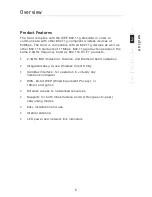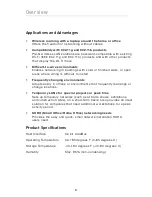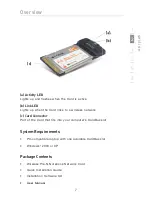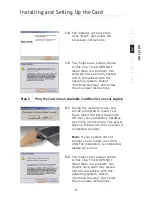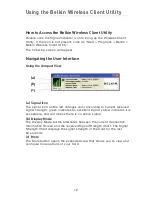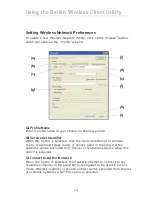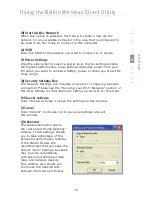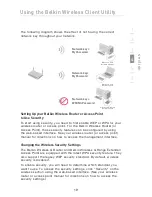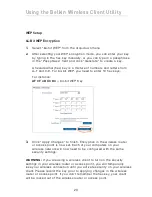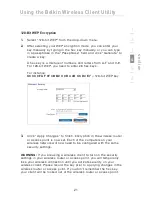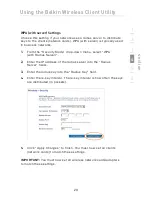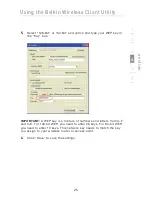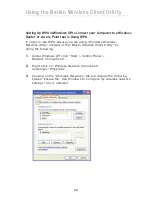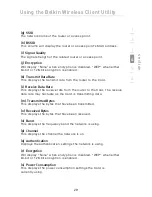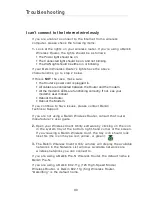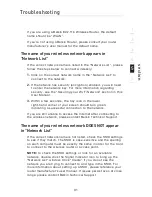
16
Using the Belkin Wireless Client Utility
Securing your Wi-Fi Network
Here are a few different ways to maximize the security of your wireless
network and protect your data from unwanted intrusion. This section is
intended for the home, home office, and small office user. At the time of
publication, three encryption methods are available.
Encryption Methods:
Name
64-bit Wired
Equivalent
Privacy
128-bit
Encryption
Wi-Fi Protected
Access
Wi-Fi Protected
Access
Acronym
64-bit WEP
128-bit WEP
WPA-TKIP
WPA-AES
Security
Good
Better
Best
Best
Features
Static keys
Static keys
Dynamic key
encryption
and mutual
authentication
Dynamic key
encryption
and mutual
authentication
Encryption
keys based on
RC4 algorithm
(typically
40-bit keys)
Added security
over 64-bit
WEP using a
key length of
104 bits, plus
24 additional
bits of system-
generated data
TKIP (temporal
key integrity
protocol) added
so that keys
are rotated and
encryption is
strengthened
AES (Advanced
Encryption
Standard) does
not cause any
throughput loss.
WEP (Wired Equivalent Privacy)
WEP
is a common protocol that adds security to all Wi-Fi-compliant
wireless products. WEP gives wireless networks the equivalent level of
privacy protection as a comparable wired network.
64-Bit WEP
64-Bit WEP
was first introduced with 64-bit encryption, which includes
a key length of 40 bits plus 24 additional bits of system-generated data
(64 bits total). Some hardware manufacturers refer to 64-bit as 40-bit
encryption. Shortly after the technology was introduced, researchers
found that 64-bit encryption was too easy to decode.




